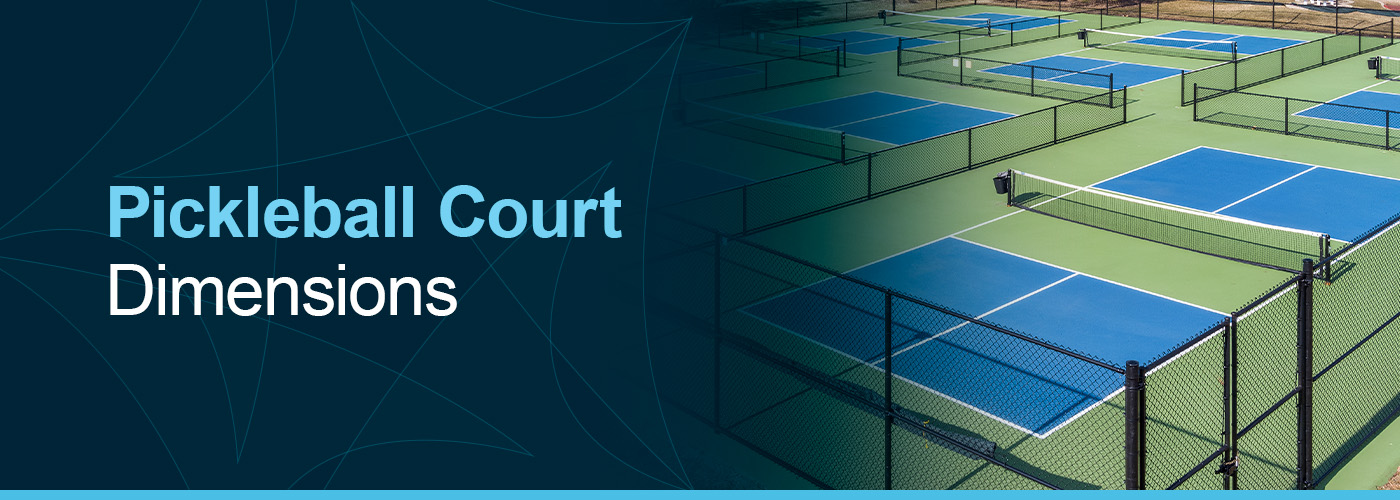Budgeting Tips for Affordable Pickleball Court Construction and Maintenance
Wiki Article
Navigating Laws for Pickleball Court Building And Construction in Your Area
Building a pickleball court in your location needs a nuanced understanding of different local guidelines, including zoning legislations, building authorizations, and safety standards. Each municipality imposes specific guidelines that can dramatically impact the feasibility of your project. Involving with local authorities and the area is essential for making sure conformity and fostering support. However, browsing this regulatory landscape can be complex and time-consuming. What are the vital steps you should take into consideration to prevent possible mistakes and ensure a smooth building procedure?Comprehending Neighborhood Zoning Regulations
When taking into consideration the construction of a pickleball court, comprehending neighborhood zoning laws is important to making certain compliance and avoiding prospective lawful concerns. Zoning laws dictate how land can be utilized and commonly consist of requirements relevant to recreational facilities. These laws can vary substantially by district, influencing variables such as court placement, illumination, dimension, and noise levels.Prior to launching construction, it is vital to seek advice from the neighborhood zoning board or preparation division to identify the details laws that put on your residential or commercial property. Certain zones might limit leisure activities, while others may call for details licenses or adherence to specific guidelines. It is additionally vital to take into consideration obstacles, which identify how much frameworks should be from home lines or other structures.
Furthermore, private developments, such as homeowner organizations (HOAs), may enforce their own rules pertaining to the building and construction and use pickleball courts. Understanding these laws can stop costly alterations or litigation down the line. Engaging with neighborhood stakeholders and neighborhood members can offer important understandings and foster support for your task, making sure that it aligns with the neighborhood's needs and assumptions.
Obtaining Necessary Structure Permits
Just how does one navigate the intricacies of obtaining needed building licenses for a pickleball court? The process begins with recognizing local guidelines and requirements established forth by municipal authorities. Normally, you will need to send a detailed site strategy that outlines the suggested court measurements, materials, and design. This strategy needs to abide by zoning legislations and any kind of particular guidelines relating to recreational facilities.When licenses are gotten, it is important to abide by any assessment timetables and requirements throughout the building stage. Keeping communication with local authorities will promote a smoother authorization process and help prevent prospective troubles. By extensively preparing and understanding the permitting landscape, you can effectively navigate the complexities associated with creating a pickleball court while continuing to be certified with all neighborhood regulations.

Assessing Environmental Influence
A detailed assessment of ecological impact is crucial when preparing the building and construction of a pickleball court. This examination aids identify prospective results on local ecological communities, water resources, and neighborhood visual appeals. Secret variables to consider include website option-- ensuring that the court is not developed on environmentally delicate land, such as wetlands or habitats for threatened varietiesDirt stability and drainage patterns must be assessed to avoid disintegration and water merging, which can adversely impact surrounding plant life and wildlife. In addition, the selection of materials is important; selecting environment-friendly and sustainable choices reduces ecological harm.
The application of effective stormwater management techniques is one more essential facet, as it aids alleviate overflow and sedimentation. Involving with local ecological agencies can offer beneficial insights into policies click to read more and best methods particular to your area.
Lastly, community input can be advantageous in recognizing any neighborhood ecological concerns and promoting assistance for the project. By conducting a comprehensive ecological effect assessment, stakeholders can ensure that pickleball court building lines up with lasting methods and adds positively to the neighborhood's environmental wellness.
Abiding By Safety And Security Requirements
Guaranteeing conformity with safety requirements is critical for the effective construction and procedure of a pickleball court. Complying with well established security guidelines minimizes the risk of injuries and accidents, making sure a safe and secure environment for gamers.Trick security requirements include appropriate court dimensions, surface area products, and lighting requirements. The court needs to satisfy the main dimensions of 20 feet broad by 44 feet long for doubles play, with proper buffer areas to stop injuries from errant rounds. Pickleball court construction. The surface go to website area must be created from non-slip products to boost grip and reduce the possibility of drops
Furthermore, lighting should suffice for evening play, giving consistent lighting to avoid darkness that can prevent exposure. Neighborhood building regulations may likewise determine details demands for fencing and web elevation to make sure gamer safety and stop unapproved accessibility to the court location.
Routine evaluations and upkeep are necessary to maintain these criteria in time. By focusing on safety conformity, court owners not just shield gamers yet also foster a positive online reputation within the community. This commitment to safety can encourage higher involvement and pleasure of the sport, eventually contributing to its growth and sustainability.

Engaging the Neighborhood in Preparation
Community participation in the preparation stages of pickleball court building can dramatically enhance the job's general success. Involving regional citizens and stakeholders promotes a feeling of possession and urges collaborative decision-making, which can result in more comprehensive assistance for the campaign.
To effectively include the neighborhood, coordinators must launch public conferences or workshops, providing a platform for residents to voice their opinions and preferences concerning place, style, and features. Studies and comments types can additionally be made use of to collect understandings from a broader target market, making sure that varied point of views are thought about.
Furthermore, developing a neighborhood board of advisers can help with ongoing discussions and address concerns throughout the planning procedure. This board can consist of agents from different demographics, such as regional schools, recreational companies, and neighborhood watch, consequently magnifying neighborhood representation.
Reliable interaction is key; updates concerning the task must be consistently shared by means of newsletters, social media, or neighborhood publications. By prioritizing area involvement, coordinators can cultivate excitement, reduce potential resistance, and produce a pickleball center that genuinely resonates with local worths and demands. This collective method not just enhances the project yet also reinforces neighborhood connections.
Final Thought
To conclude, navigating the intricacies of pickleball court construction demands an extensive understanding of neighborhood guidelines, consisting of zoning legislations, structure licenses, and safety and security requirements. Conducting environmental analyses is vital to mitigate environmental influence, while community involvement can enhance support for such tasks. By adhering to these guidelines and cultivating collaboration, successful execution of pickleball courts can be achieved, promoting entertainment opportunities and community wellness. Proceeded diligence find in these areas will certainly make certain certified and lasting development.Constructing a pickleball court in your area requires a nuanced understanding of various local regulations, including zoning laws, building permits, and security requirements.When thinking about the building of a pickleball court, comprehending regional zoning legislations is critical to making sure conformity and staying clear of possible legal concerns. By completely preparing and comprehending the permitting landscape, you can successfully navigate the complexities involved in constructing a pickleball court while continuing to be certified with all regional policies.
In conclusion, navigating the intricacies of pickleball court building and construction requires an extensive understanding of local regulations, consisting of zoning regulations, building permits, and safety criteria. By adhering to these guidelines and cultivating partnership, successful execution of pickleball courts can be attained, promoting recreational possibilities and neighborhood well-being.
Report this wiki page